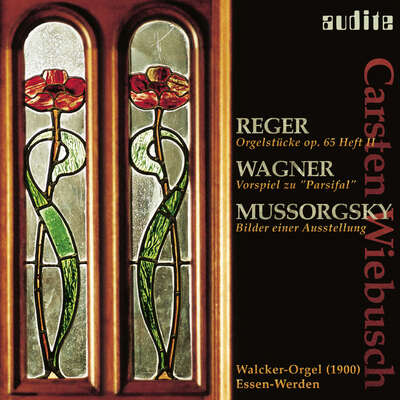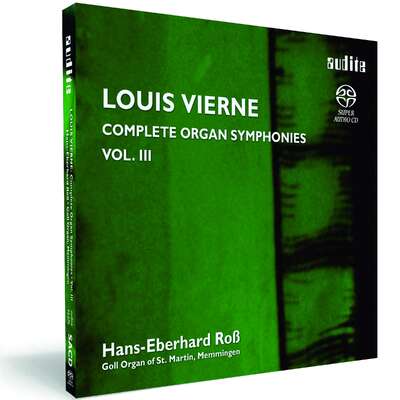
Die vorliegende Aufnahme komplettiert die dreiteilige audite-Gesamtaufnahme der sechs Orgel-Sinfonien von Louis Vierne, deren Klangkolorit und zunehmende Mystik den Hörer bannt. Der warme, weiche Klang der Goll-Orgel schafft unaufdringliche, symphonische Kraft und Fülle und bleibt dabei doch stets klar. Die polyphonen Strukturen der Werke werden deutlich und die Durchhörbarkeit des Klangs ermöglicht frischere Tempi als üblich.mehr
Titelliste
Details
|
Louis Vierne: Organ Symphonies op. 47 & op. 59
Complete Organ Symphonies • Vol. 3 |
|
| Artikelnummer: | 92.676 |
|---|---|
| EAN-Code: | 4022143926760 |
| Preisgruppe: | ACX |
| Veröffentlichungsdatum: | 25. April 2014 |
| Spielzeit: | 72 min. |
Zusatzmaterial
-
Registrierungsinformation
Goll-Orgel von St. Martin in Memmingen
- BR-Klassik_CD-Tipp_20140428
Informationen
Die Orgel-Symphonien fünf und sechs, komponiert in den Jahren 1924 und 1930, komplettieren die dreiteilige Gesamtaufnahme der sechs Orgel-Symphonien Louis Viernes bei audite. Beide Werke entstanden, als Vierne festbestallter Organist von Notre-Dame in Paris war, sein Leben auf internationale Erfolge zusteuerte - sich aber auch zunehmend tragisch verdichtete. Aufgenommen an der Goll-Orgel von St. Martin in Memmingen, prägt der warme, weiche und weitmensurierte Klang der Orgel die Einspielung. Ihr Klang schafft unaufdringliche Kraft und Fülle, wirkt im Kirchenraum von St. Martin symphonisch und dabei doch stets klar. Die polyphonen Strukturen der Werke werden deutlich und die Durchhörbarkeit des Klangs ermöglicht frischere Tempi als üblich - beides bei Vierne-Einspielungen keine Selbstverständlichkeit.
Louis Victor Jules Vierne war hochbegabt und ehrgeizig, aber nahezu blind. Seine Reaktion auf virtuoses Orgelspiel, wie etwa das von César Franck, war geprägt von Wonne und Leiden, Freude und Furcht. Er studierte in Paris bei Charles-Marie Widor, der die Gattung der Orgel-Symphonien begründet hatte. 23-jährig stand eine Zukunft voller Hoffnung vor ihm. Das war 1894 - als der französische Komponist, Organist und Instrumentalpädagoge seinen Lehrer doppelt vertreten durfte: am Orgeltisch der Pariser Kirche Saint-Sulpice und in Widors Konservatoriums-Orgelklasse. Doch Vierne war zu Höherem berufen: Zwischen 1899 und 1930 komponierte er sechs Orgel-Symphonien, die die Gattung auf eine bis dato unbekannte Höhe von Klangfarben-Reichtum, Mystik und zyklischer Architektonik bringen sollten.
Hans-Eberhard Roß ist Kirchenmusikdirektor in Memmingen. Er hat für audite bereits eine international erfolgreiche Gesamtaufnahme der Orgelwerke von César Franck eingespielt. Zusätzliche Informationen zur Goll-Orgel und zur Registrierung der Werke finden Sie hier.
Besprechungen

Stereoplay | Sonderheft zur HIGH END 2018 | Lothar Brandt | 1. Juni 2018
Neueste Feinkost
Frisches Futter für den Hörtest bringt die stereoplay-CD. Eine genussreiche Mischung fördert bei jeder HiFi-Demo besondere Qualitäten einer Anlage zutage.
Nach so viel Entschweben in Wohlklang fällt es naturgemäß schwer, zurMehr lesen

Ars Organi | 65. Jhg. Heft 1 März 2017 | Martin Köhl | 1. März 2017
Die Gesamtaufnahme der Vierneschen Orgelsymphonik durch Hans-Eberhard Roß setzt Maßstäbe in mancherlei Hinsicht, denn sie ist sehr durchdacht, beruht auf überragendem technischem Können des Interpreten und beweist darüber hinaus, dass Cavaillé-Coll-Orgeln für die Darstellung dieses Œuvres durchaus kein Monopol besitzen.Mehr lesen

Neue Musikzeitung | 7-8/15 (Juli-August 2015) | Hanspeter Krellmann | 1. Juli 2015
Die Rehabilitierung der vermeintlichen Orgel-Operette
Ein Streifzug durch die französische Orgelmusik des 19. Jahrhunderts anlässlich einiger CD-Neuerscheinungen
Roß' Gesamteinspielung der Vierne-Sinfonien ist bemerkenswert durch seine interpretatorische Herangehensweise an die sechs Stücke. [...] Roß lässt Viernes Sinfonien – vor allem die späten, also die Nummern vier bis sechs, die den Gipfelpunkt des sogenannten Impressionismus überschritten haben – sich an extremen Ausprägungen moderner Haltungen wie der Atonalität reiben, um ihnen eine angemessene Ausdrucksbreite abzugewinnen. So atmet die Musik einerseits, entzieht sich dem Ruch einer lediglich effektgesteuerten Wirkungsweise und richtet sich auf der anderen Seite entscheidend auf das Wechselverhältnis von Struktur und Ausdruck. Mehr lesen

Australian Hi-Fi | 06.02.2015 | John Sunier | 6. Februar 2015
At the time of composition of these works, Vierne was in a serious funk ofMehr lesen
American Record Guide | December 2014 | William J Gatens | 1. Dezember 2014
This is the third and final volume in Hans-Eberhard Ross’s recording of the six organ symphonies of Louis Vierne (1870–1937). One of the chiefMehr lesen
Donald Metz reviewed the first volume in the series (Audite 92.674; March/April 2013), and I reviewed the second (92.675; March/April 2014). Our assessments were similar. Metz refers to Ross’s “more clinical approach” in comparison with other performers of this music. In my review of the second volume I thought his judgement perhaps too severe, though I am now inclined to reconsider. In addition to the instrument and the space, Ross sometimes allows a more open articulation than the continuous legato that was standard in the time of the French romantic and postromantic repertory. He also makes some alterations to the composer’s registrations, but I do not find those drastic. The general categories of tone color are observed, but the details always need to be adapted to the particular organ, as no two of them are the same.
The more fully registered passages here seem to me the more persuasive, as they effectively engage the reverberation of the room. The quieter and more lightly registered movements and sections are the ones that sound clinical to me. A good example is the opening movement of Symphony 5. This is a gloomy opening and should sound as if coming to the listener from out of the shadows. Here it is just too matter-of-fact. The clarity turns out to be counterproductive. Much the same could be said of the second movement of Symphony 6 with its troubled, jagged melodies and anguished chromatic harmonies.
I would not describe Ross’s performances in general as mechanical or dispassionate, but they sound as if he is more concerned about getting the notes to flow smoothly—no small feat in these formidably difficult works—than in projecting the expressive qualities of the music. It sounds as if he is so preoccupied with the surface of the music that he never really gets inside so as to convey to the listener what makes it tick. These are very unromantic performances.
Of the Vierne recordings I have encountered recently, the one that has most impressed me is François Lombard’s of Symphony 6 on the three-manual Cavaillé-Coll (1870) at St Peter’s Church, Calais, where he is organist (Motette 13811; Jan/Feb 2014). Not only is his performance wonderfully moving, but the recording proves that it is possible to capture the sound of a romantic organ in a reverberant room without losing most of the musical detail.

Württembergische Blätter für Kirchenmusik | 6/2014 November / Dezember (81. Jahrgang) | 1. November 2014 Neue Tonträger
Hier liegt eine neue Aufnahme aller Orgelsymphonien Louis Viernes vor, dieMehr lesen
www.pizzicato.lu | 25/10/2014 | Remy Franck | 25. Oktober 2014 Entflechtungen
In seinen späten Orgelsymphonien verdichtet Louis Vierne das Tonmaterial zusehends mit verwegenen Harmonien und Klangfolgen, die an die Grenzen derMehr lesen
Sensitive and transparent performances, well structured, so that the overall architecture can be totally experienced.

Gramophone | September 2014 | Malcolm Riley | 1. September 2014
This third volume concludes Hans Eberhard Ross's magisterial survey of Vierne's six organ symphonies, recorded in 2013 on his 'home' organ, theMehr lesen
Ross has no technical problems with these fearsomely complex scores, rattling through them with aplomb and authority. Another bonus is that he uses the recent edition by Laukvik and Sanger, and – in the case of the Fifth Symphony – reference to the copy marked up by the work's dedicatee, Joseph Bonnet. This, the longest of the six, is the narrative of a hypersensitive man who suffered many personal setbacks.
The Sixth Symphony has a sunnier disposition. The skittish devilment of the Scherzo provides a welcome pivot between the serenity of the second-movement Aria and the sunken gloom of the Adagio, where Vierne pushes his tonal language to its furthest limit. The exuberance of the finale provides a sonic feast. Above all, Ross succeeds in stressing Vierne's contrapuntal mastery with flair while retaining a strong sense of the Romantic architecture of these huge structures.

International Record Review | September 2014 | Robert Matthew-Walker | 1. September 2014
This is the third and final volume of the complete recordings of the Vierne symphonies played by Hans-Eberhard Roß on the 1998 Goll organ of StMehr lesen
The clarity, rather than atmosphere, is important also, for as we have noted before, the textual accuracy of these scores is not something to be laid down beyond dispute. Viern’s eyesight was poor, and it deteriorated significantly as he got older: consequently, he was unable to check the page proofs from his publishers, and the Braille music notation he used was itself in certain instances unclear. In addition, there are various surviving copies of the first editions which were altered at the time of publication, or soon afterwards, by several of Vierne's pupils, presumably in accordance with his wishes.
We are fortunate today in that there have been two recent editions of these symphonies which are about as accurate as we can get, each the product of considerable erudition: the more recent is from Bärenreiter, edited by Helga Schauerte-Maubouet, which has appeared a few years after the Carus-Sanger-Laukvik edition. It is this latter edition that Roß favours – but not entirely, for he has added to the scholarship of the Carus publications with further research from Günther Kaunzinger, a pupil of Duruflé, himself a pupil of Vierne.
Roß contributes an important corollary to the excellent booklet notes by Rüdiger Heinze , on his choice of registration and the edition on which his interpretations are based. The specialist and organ enthusiast will want to have these important clarifications, but it is the fine nature of Roß's performances that will command the greatest interest. In terms of tempos, he is ideal; an important characteristic, this, in the case of the Fifth Symphony, Vierne's largest (almost 40 minutes) and in many ways most personal work. By the time he came to conceive this work (c. 1924), ten years after the Fourth, Vierne's life had continued on its downward journey with a succession of misfortunes and tragedies that would have felled a less-strong character – and almost did, in his case.
Consequently, in this work Vierne has become more inward-looking, the language more tortured in its concentration upon an intense chromaticism at times, a tonal fluidity, that may be considered a consequence of Franckian innovation to which Vierne turned to express his inner bitterness and resignation. But the artist reigns supreme: this music has an intensity of expression that demands clarity from the interpreter, and in this important instance the Goll organ is an ideal choice, especially in the quality of these recordings. Roß's unfolding of the initial tortuous line that opens the Symphony is magnificent and deeply expressive, and throughout he gives a performance of considerable distinction.
By the time of the Sixth Symphony ( 1930) Vierne was seemingly reconciled to his fate: the bitterness and anguish of the Fifth has gone, replaced by a contemplative character that, in the great Adagio movement, approaches the majesty of Bruckner. This is followed by an astonishing finale – full of energy, in which earlier material is subsumed into a remarkably positive edifice of sound. Once again, in this wonderful final Symphony, Roß is deeply impressive; his tempos and choice of mixtures are well-nigh ideal: in many ways, Roß follows those known to have been used by the composer, but he is not afraid to change them when the musical argument demands a greater clarity.
All in all, this is – as I hope to have indicated – an impressive series of recordings, each of which has to be counted amongst the best yet issued, and for many this will be the first choice when seeking to investigate a truly important set of works.
http://theclassicalreviewer.blogspot.de | Saturday, 5 July 2014 | Bruce Reader | 5. Juli 2014 Superb performances of Vierne’s organ symphonies from Hans-Eberhard Roß playing the magnificent Goll Organ of St. Martin’s, Memmingen on a new release from Audite
Hans-Eberhard Roß is very fine, with lovely phrasing, dynamics and very much a feeling for the music. The way Roß handles the various musical lines is superb and there are some spectacularly dramatic passages.Mehr lesen

Audiophile Audition | July 3, 2014 | John Sunier | 3. Juli 2014
The third and final volume of the six Vierne organ symphonies, closing out this series of excellent performances and sonics. Mehr lesen

BBC Music Magazine | July 2014 | JA | 1. Juli 2014
A magnificent conclusion to Hans-Eberhard Roß's survey of Vierne's Organ Symphonies. Recorded on a non-French instrument, the performances still haveMehr lesen
www.concerti.de
| Juli/August 2014 | Volker Tarnow | 1. Juli 2014
Leichtigkeit statt volle Dröhnung
Konsequent gegen die französische Tradition gebürstet: Die Orgelsinfonien Nr. 5 & 6 von Louis Vierne
Roß gestaltet die Werke des neben Tournemire wichtigsten Organisten jener Zeit mit erstaunlicher Leichtigkeit, die Dynamik besticht durch Differenziertheit, das Klangbild durch Transparenz, seine Registrierungen sind von geradezu fabelhafter Farbigkeit.Mehr lesen

Bayern 4 Klassik - CD-Tipp | Leporello - CD Tipp 28.04.2014 | Matthias Keller | 28. April 2014 Louis Vierne: Orgelsymphonien
Wenn es einen Komponisten gibt, dessen Leben von Schicksalsschlägen gezeichnet war, dann ist es der Franzose Louis Vierne. Nachdem Vierne bereitsMehr lesen
Letztes künstlerisches Aufbäumen
Teile von Viernes letzten beiden Orgelsymphonien klingen weniger nach Resignation sondern eher wie der trotzige Triumph eines Genies, das sich noch einmal gegen das eigene Schicksal auflehnt und der Welt noch einmal sein schöpferisches Credo entgegen schleudert: "das wahre Lebenselement der Kunst liegt in der Evolution" …
Hans-Eberhard Roß, seit 1991 Dekanatskantor an St. Martin in Memmingen und seit einigen Jahren Herr über eine bemerkenswerte, von der Firma Goll neu erbaute Orgel französischen Zuschnitts, scheint all die biografischen Fußnoten zum Thema Louis Vierne einschließlich des Notentextes in sich aufgesogen zu haben: Das konstruktive, die traditionelle Harmonik erweiternde Element ebenso wie das depressive – zu hören etwa im "Adagio" der sechsten und letzten Symphonie Louis Viernes, wo ein fast einminütiger Halteton für bizarre Erstarrung sorgt und fast wie eine Vorwegnahme von Louis Viernes plötzlichem Tod ein paar Jahre später auf der Orgelbank anmutet.
Roß trifft genau diese Balance zwischen abgrundtiefer Tristesse einerseits und wahrhaft visionärer Orgelsymphonik. Ambitioniert ist diese Vierne-Edition nicht nur klangtechnisch und was den Farbreichtum der Goll-Orgel betrifft sondern auch in puncto musikalischer Gestaltung und Differenzierung. Selten ist in einer Aufnahme so klar zutage getreten, dass Louis Vierne nicht nur Erbe sondern zugleich Vollender der von Charles-Marie Widor geschaffenen Gattung "Orgelsymphonie" ist.

Bayerischer Rundfunk | BR-Klassik, CD-Tipp vom 28.04.2014 | 28. April 2014
BROADCAST
CD-TIPP
Sendebeleg siehe PDF!Mehr lesen
Mehr von Louis Vierne

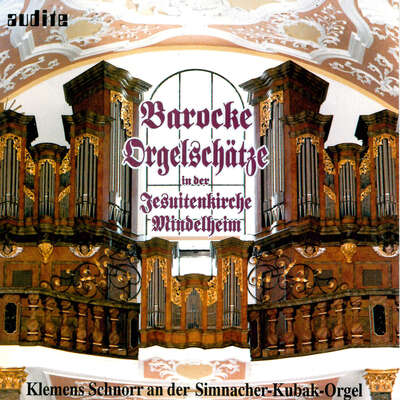
Baroque Organ Treasures
Dietrich Buxtehude | Samuel Scheidt | Nikolaus Bruhns CD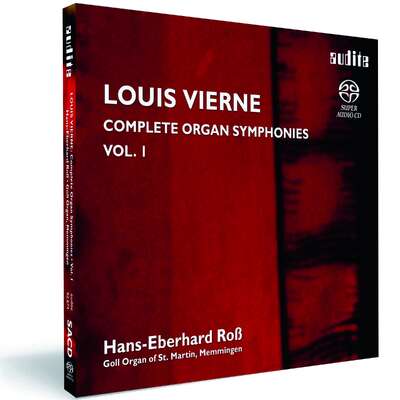
Organ Symphonies op. 14 & op. 20
Louis Vierne SACD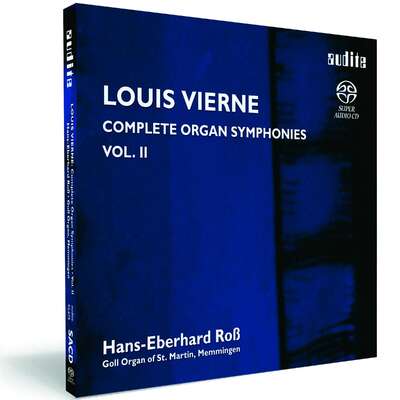
Organ Symphonies op. 28 & op. 32
Louis Vierne SACDMehr aus diesem Genre

The Gabler-Organ in the Basilica Weingarten
Antonio Vivaldi | Johann Pachelbel | Justin Heinrich Knecht CD
Transcriptions for Organ
Franz Liszt | Igor Stravinsky CD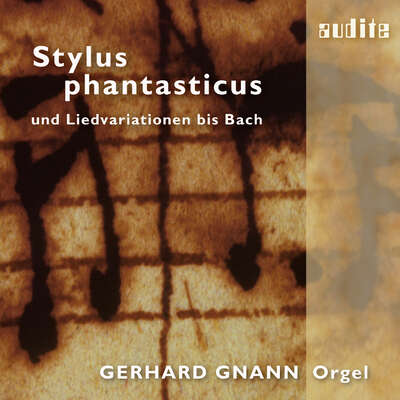
Stylus Phantasticus
Nicolaus Bruhns | Jan Pieterszoon Sweelinck | Dietrich Buxtehude CD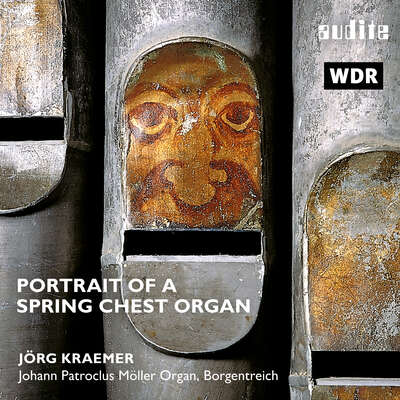
Portrait of a Spring Chest Organ
Georg Muffat | Friedrich Wilhelm Zachow | Johann Gottfried Walther CD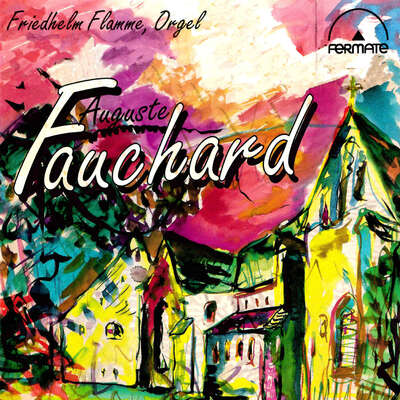
Organ Works
Auguste Fauchard CD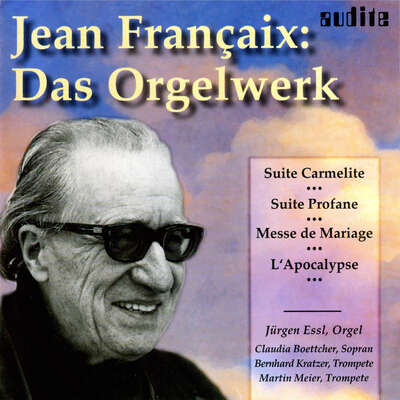
Organ Works
Jean-René Francaix CD
Organ Works
Max Reger CD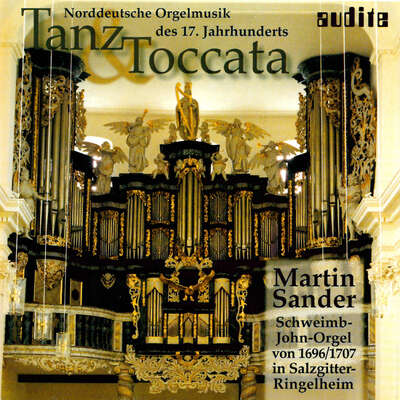
Tanz & Toccata
Dietrich Buxtehude | Michael Praetorius | Nicolaus Bruhns CD
Pathos & Freude - Organ Works by J.S. Bach
Johann Sebastian Bach CD